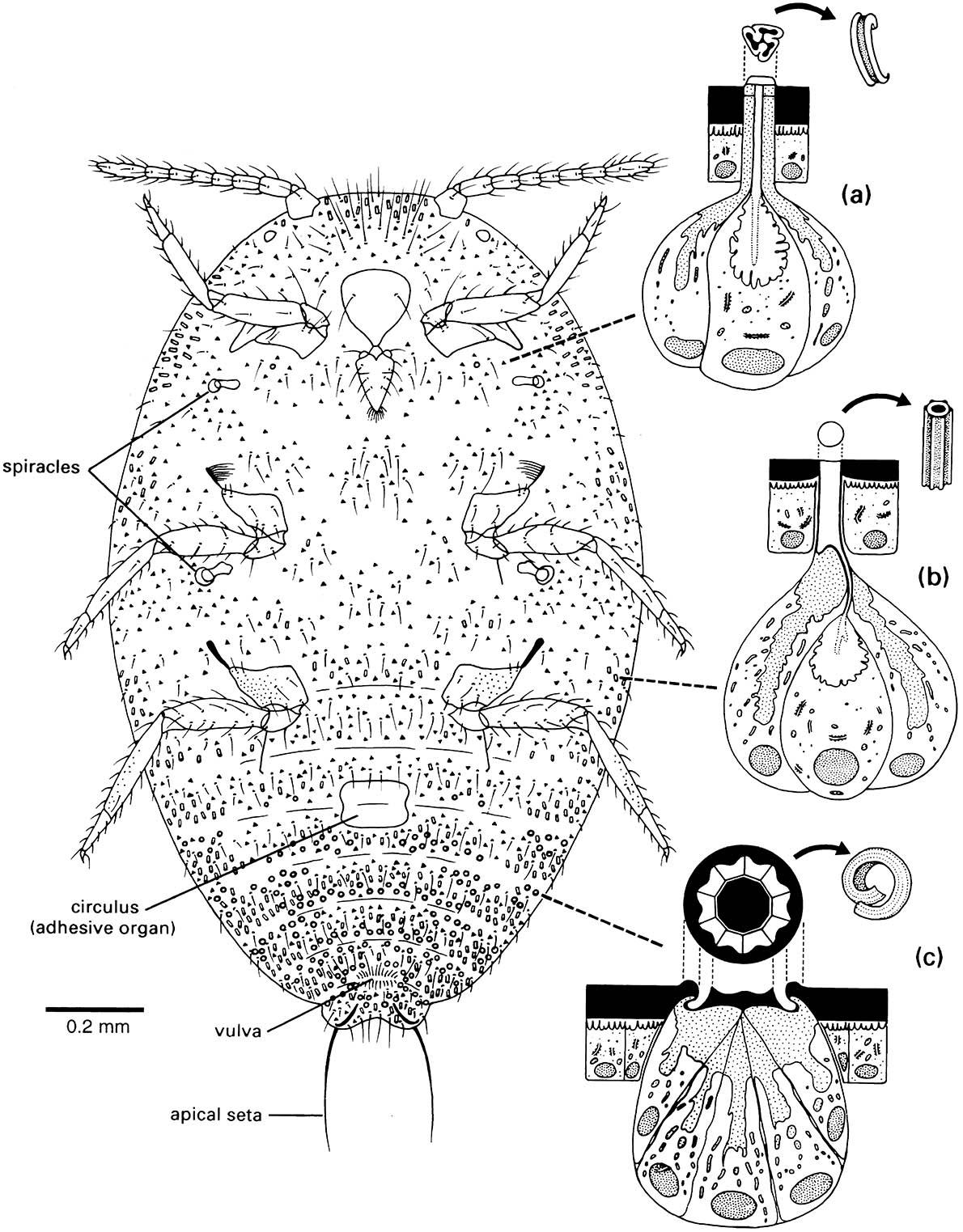Figures 2.5

Figures 2.5. The cuticular pores and ducts on the venter of an adult female of the citrus mealybug, Planococcus citri (Hemiptera: Pseudococcidae).
Enlargements depict the ultrastructure of the wax glands and the various wax secretions (arrowed) associated with three types of cuticular structure: (a) a trilocular pore; (b) a tubular duct; and (c) a multilocular pore. Curled filaments of wax from the trilocular pores form a protective body-covering and prevent contamination with their own sugary excreta, or honeydew; long, hollow, and shorter curled filaments from the tubular ducts and multilocular pores, respectively, form the ovisac. (After Foldi 1983; Cox 1987)

